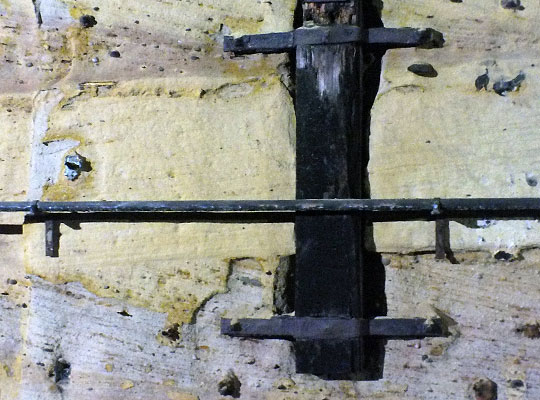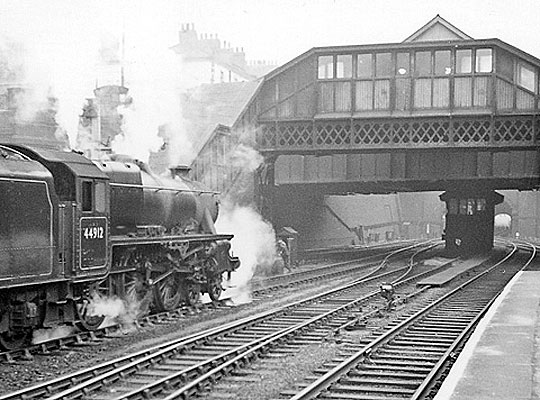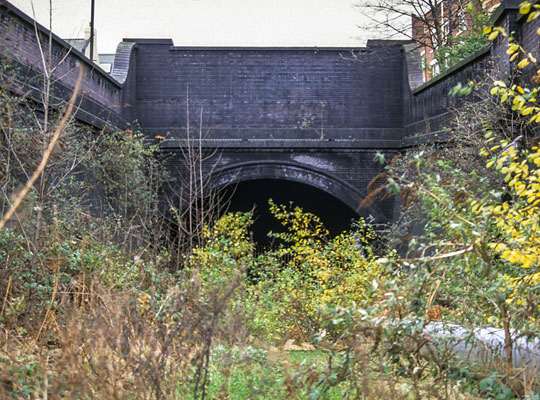Victoria Street Tunnel
Victoria Street Tunnel
























For many years, the Manchester, Sheffield & Lincolnshire Railway sought an independent line to the capital as almost 70% of the coal it transported had to complete its journey southwards on the metals of rival companies.
In 1873, it promoted a Bill for the construction of several joint lines in association with the Midland Railway, the intention being to reach St Pancras, but this was strongly opposed by the Great Northern. Powers to extend its own line from Sheffield to Chesterfield were sought in 1888, however opposition from the Midland stifled this plan. A year later, a Bill was deposited for a more extensive scheme, linking Beighton with Annesley via Staveley, and a branch to Chesterfield. This was passed and first welcomed traffic from the Derbyshire coalfield in 1892.
In the meantime, engineers Charles Liddell, Edward Richards and Edward Parry prepared Parliamentary plans for a 92-mile extension to London, comprising a line from Annesley to Quainton Road where it would form a junction with the Metropolitan Railway. A Bill was presented to Parliament in 1891, but this was rejected. The following session brought an amended scheme, including an extension at the southern end to reach Marylebone.
Royal assent was granted at the end of March 1893, with construction contracts let in September 1894 and the first sod cut on the 13th November. By July 1898, the line had been sufficiently readied to allow the running of coal trains and the route was formally opened to passengers on 9th March 1899. By this time the company had changed its name to the Great Central Railway and spent around £7 million on the project, the equivalent of £7.4 billion today.
For engineering purposes, the line was divided into sections, with Parry being appointed as engineer for the Northern division (Annesley to Rugby). Fulfilling the construction contracts alongside him were Messrs Logan & Hemingway (Annesley to East Leake), Henry Lovatt (East Leake to Aylestone) and Messrs Topham, Jones & Railton (Aylestone to Rugby).
The line entered Nottingham through a series of tunnels or covered ways, emerging into the open at Victoria Station where a huge cutting offered a floor space of 12¾ acres. Reaching 58 feet deep, it demanded the excavation of almost 600,000 cubic yards of sandstone.
Immediately to the south, trains travelled through a tunnel of 392 yards in length, officially named Victoria Street but also known – sometimes in part – as Weekday Cross or Thurland Street, the latter being passed beneath for a distance of 100 yards before shops, warehouses and offices were encountered. Its construction entailed costly and difficult work, the buildings overhead having to be carefully supported whilst tunnelling operations continued.
At the north end, the Thurland Street portion was progressed using cut-and-cover methods, although its dimensions were identical to those of the bored section – 27 feet wide but an arch spanning 29 feet, with the springings being set back on ledges 1 foot from the face of the rock. The rise of the arch was 8 feet 6 inches whilst the crown was 20 feet above rail level. Driven though bunter sandstone, sidewalls were deemed unnecessary except for short lengths at both ends.
Excavations for the cut-and-cover section were taken down to arch springing level where the centring was fixed and brickwork turned, built in lime mortar. The arch was 1 foot 10 inches thick at the crown and 2 feet 3 inches at the haunches.
Work on the bored tunnel began by means of a heading driven at springing level which was afterwards enlarged to the required width and height to accommodate the brickwork, 3 feet thick in places. The foundations of several buildings were cut through and had to be supported on timbers until the arch was turned. Afterwards they were carefully underpinned with brickwork in cement.
Although the Great Central’s freight service ended in 1968, the tunnel continued to be used as a headshunt by trains serving the plasterboard works at Rushcliffe and army depot at Ruddington. This arrangement ended when the Loughborough curve opened in 1974, creating a connection between the Midland and Great Central main lines. The tunnel officially closed on 8th April.
Today, the site of Nottingham’s Victoria Station is occupied by a soulless multi-storey car park. The tunnel currently accommodates steam heating pipes from the city’s Cattle Market waste incinerator to flats above the shopping centre. The southern approach cutting is now occupied by the Centre for Contemporary Art Nottingham, preventing access to the portal.
Inside the tunnel is dry and benign. A few items of railway furniture remain fixed to the sidewalls, including signal brackets and wooden cable supports. There is also a partly-infilled bothy used by the route’s former trackworkers.
(Ben Brooksbank and Martin Cordon’s pictures, taken from Geograph, are used under this Creative Commons licence.)








